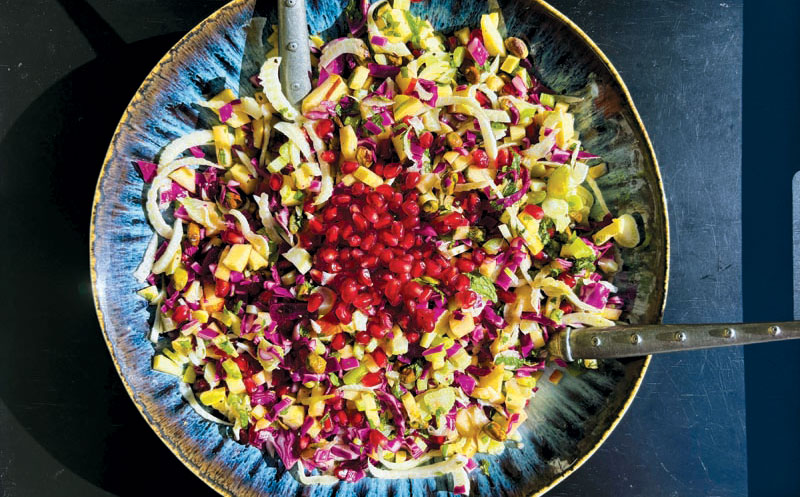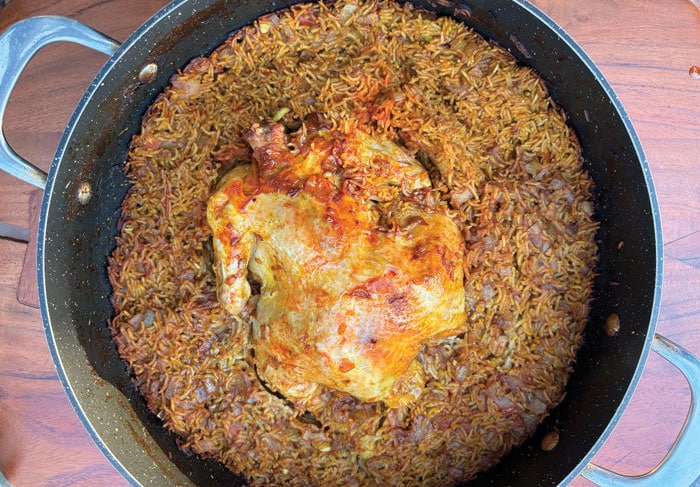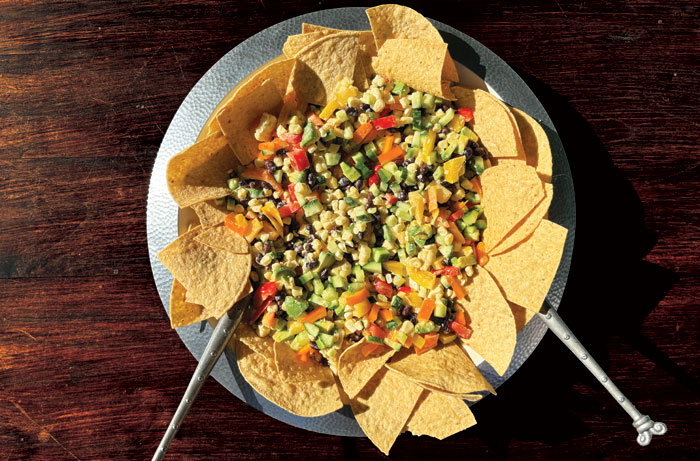In Salads We Trust
This red cabbage and fennel slaw has a truly festive feel, with its ingredient list of fresh pomegranate, crispy apple and nutty, earthy pistachios.

They say hindsight is 20/20 and when I look back at my life, I’m amazed by all the people, famous and not so famous, I’ve met. In 1980’s Los Angeles, my path crossed with Hollywood stars like Elizabeth Taylor, Frank Sinatra, Sylvester Stallone, Goldie Hawn, Ryan O’Neal, Ali MacGraw and many more.
But it’s the Torah luminaries and rabbinic leaders that I had the privilege to meet that touched my neshama the most. I had the honor of lining up for Sunday dollars from the Lubavitcher Rebbe in Crown Heights. I was honored to receive personal brachas from the saintly Sephardic Chief Rabbi Mordechai Eliyahu and famed Kabbalist Ha’Rav Yitzchak Kaduri.
When I was young, I took so much for granted. I did not realize just how precious these opportunities were. But I am grateful for one youthful opportunity I didn’t squander. to study with Ha’ham Rabbi Solomon Gaon when I was a student at Yeshiva University.
Rabbi Gaon was born in Travnik, Bosnia and Herzegovina in 1912 and he studied at the Yeshiva in Sarajevo. Tragically, both his parents were murdered in the Holocaust. He rebuilt his life, receiving his rabbinical ordination from Jews’ College in London and in 1949, he became the Sephardic Rabbi of the British Commonwealth.
He helped found the Sephardic Studies Program at Yeshiva University and I took his classes on Jewish holidays and life cycle events. He was short and bald, with a round face and twinkling eyes, a soft accent and a kindly manner. He told us stories about the British royal family. (Did you know that all the Royal men were circumcised by a mohel? Although rumors are that Diana put a stop to that tradition.)
One day in class, I was befuddled by his pronouncement that traditionally, Syrian Jewish women wore their gold embroidered wedding gowns to their son’s Brit Milah. How could they possibly fit, I asked. They were kaftans, he replied. Aah, that makes sense.
He told us that in Sephardic and Middle Eastern societies, the man was responsible for the household food. That explained why my grandfather and father always brought home boxes of fruits and vegetables and sacks of rice and other kitchen staples.
In Sephardic and Middle Eastern societies, the man was responsible for the household food. That explained why my grandfather and father always brought home boxes of fruits and vegetables and sacks of rice and other kitchen staples.
It explained why many years ago, Rachel’s father was at the kosher market, doing the Shabbat food shopping. When I greeted him with a smile, I saw that he was buying a lot of fennel. I wasn’t yet a Sephardic Spice Girl, so I asked what it was used for. He told me that it is excellent in salads and tagines.
Ever since, I have loved to use fennel in my salads and roast chicken dishes.
—Sharon
The Jewish holidays just mean overindulging. No matter how much I resolve to make a small menu, I’m pulled by family traditions and new recipes. So, it’s always plentiful and we can’t help ourselves from eating just a little too much.
The recovery from all this rich indulgent food is super important. And for me, the best way is to eat salads. Raw and cooked “salatim” are the stars of the Moroccan kitchen.
Both Sharon and I love to start our Shabbat meals with at least three big beautiful salads.
We encourage you to do the same — you’ll be surprised how delighted your guests will be. Salad is always a wonderful way to get creative. In addition to all the bright, colorful fresh vegetables (and fruit), you can add vegan proteins like canned beans, cooked lentils and quinoa and garnish with nuts and seeds.
This red cabbage and fennel slaw has a truly festive feel, with its ingredient list of fresh pomegranate, crispy apple and nutty, earthy pistachios. The peppery cabbage and licorice fennel play against the cool menthol of the mint leaves and the celery adds extra crunch. Adding the light, sweet vinaigrette ten minutes before serving ensures that the salad retains its delightful crunch. Have the ingredients chopped up and ready in your refrigerator and you can throw it together with minimal effort.
Honestly, although this salad is incredibly healthy (your gut microbiome will thank you) it’s also incredibly indulgent and quite addictive. We guarantee, the more salad you make and eat, the more salads you will crave.
—Rachel
Festive Red Cabbage and Fennel Salad
Vinaigrette:
1/4 cup extra virgin olive oil
2 Tbsp honey
1/3 cup red or white wine vinegar
1 tsp garlic powder
Salt and pepper
In a small bowl or jar, whisk together honey and olive oil.
Add vinegar, garlic powder and salt and pepper. Whisk until all ingredients are thoroughly combined. Set aside
Salad:
1/2 medium purple cabbage, shredded
2 large honeycrisp or gala apples, diced
1 large fennel, thinly sliced
3 celery stalks, diced
1/2 bunch mint, soaked, drained and roughly chopped
1/2 cup roasted and salted pistachios
1 cup pomegranate seeds
In a large bowl, add cabbage, apples, fennel, celery, mint and pistachios.
Ten minutes before serving, dress with the vinaigrette and toss well.
Garnish with pomegranate seeds.
Sharon Gomperts and Rachel Emquies Sheff have been friends since high school. The Sephardic Spice Girls project has grown from their collaboration on events for the Sephardic Educational Center in Jerusalem. Follow them
on Instagram @sephardicspicegirls and on Facebook at Sephardic Spice SEC Food.






